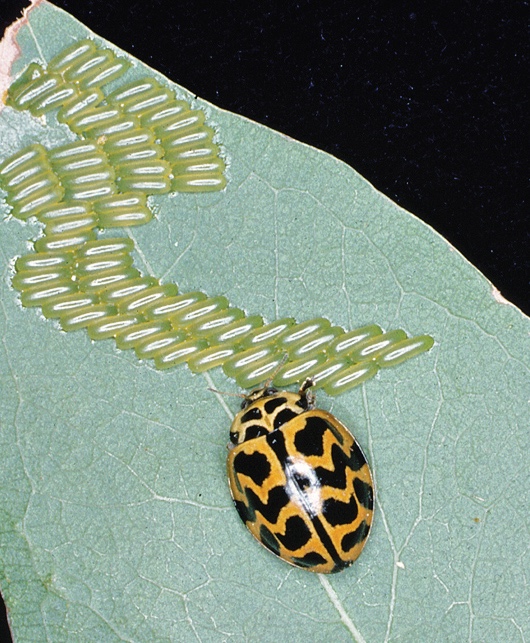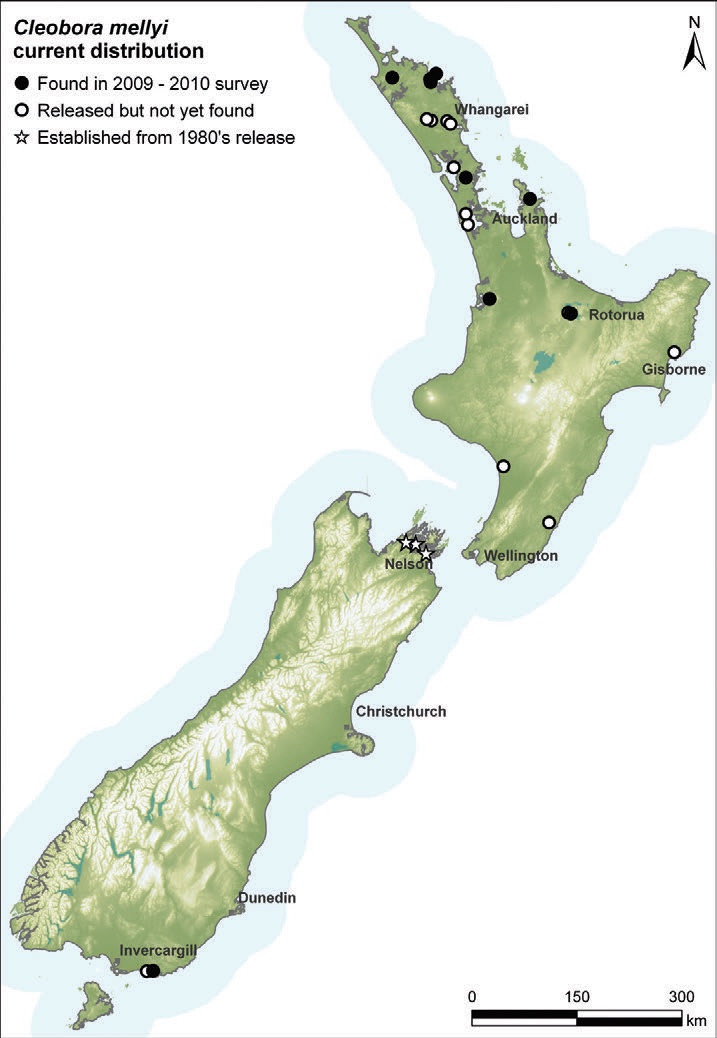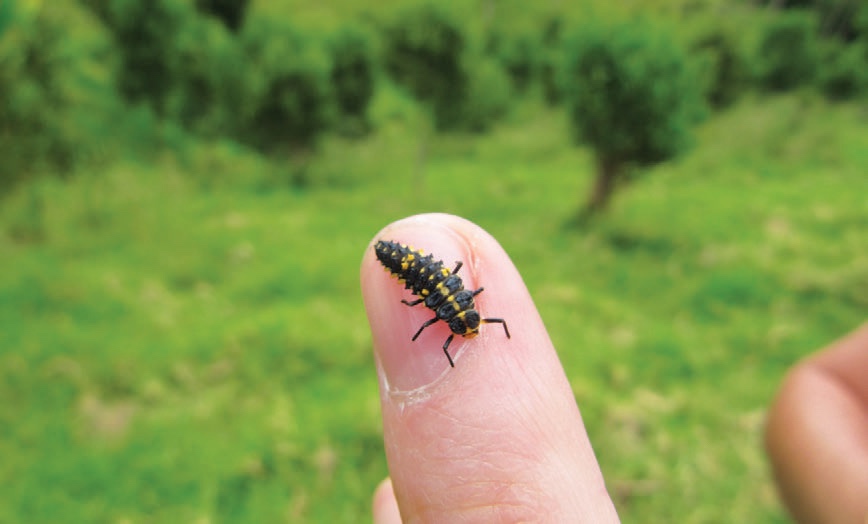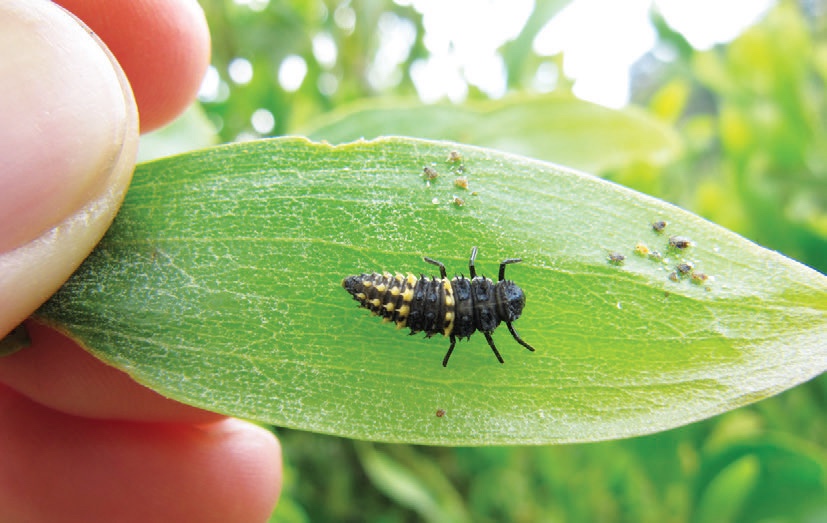Southern ladybird gets a second chance
Toni Withers and Lisa Berndt, New Zealand Tree Grower November 2010.
Efforts by NZFFA members and Scion to encourage the spread of biological control agent, Cleobora mellyi, could be good news, particularly for blackwood growers. A recent survey finds the helpful ladybird now widely established in New Zealand.
The southern ladybird C. mellyi is a predatory beetle that feeds on eucalypt and acacia pests. This insect was introduced to New Zealand from Australia in the 1970s and 1980s in the hope it would help control the eucalyptus tortoise beetle, Paropsis charybdis. Unfortunately it only became established at one place in the Marlborough Sounds.
Scientists discovered that C. mellyi needed additional food sources to reproduce successfully, particularly in the form of sap-sucking psyllids. These species may not have been sufficiently abundant in the 1980s for the released ladybirds to establish successfully.
Only two psyllid species were present on eucalypts in New Zealand when C. mellyi was first introduced and at certain times of the year these species are scarce, which could leave the ladybirds hungry. However, at least nine new psyllid species, as well as additional leaf beetle species, have established in New Zealand on eucalypts and acacias since the original release of C. mellyi. Therefore conditions were right to increase the distribution of this predator.
More pests
The discovery in 1996 of a new tortoise beetle Dicranosterna semipunctata on blackwood caused renewed interest in C. mellyi, as it also feeds on the tortoise beetle which is now widespread in the upper North Island. In October 2005, Richard Davies-Colley and Dean Satchell re-collected C. mellyi from blackwoods and eucalypts in the Marlborough Sounds to try and relocate this predator to other areas. Collections were also made by Southwood Export Ltd for release in Southland.

The collected beetles were reared in captivity. Then 1,350 eggs and over 5,000 adults were released at 19 sites in the North Island from October to December 2006 and in September 2007.
Success
Last summer most of the sites were visited to check for establishment of C. mellyi. which were found at eight of the 14 sites visited in the North Island, as well as at one of the two Southland sites. At some sites establishment occurred from releases of only 23 adult ladybirds.The southern ladybird is now established in Northland, Auckland, Coromandel, Waikato and Bay of Plenty, in addition to the Marlborough Sounds site.
Although search effort was concentrated on blackwoods, eucalypts were also examined at most release sites. However only one individual C. mellyi adult was found on eucalypts, suggesting they may have a preference for blackwoods and their pests. Further research is required however to understand what degree of effect C. mellyi can have on tortoise beetles and psyllids on eucalypts and blackwood.
Other ladybirds
During the surveys last summer, the presence of a number of other ladybird species on blackwood was noted with interest, as they are also likely to be feeding on blackwood pests.

The most common ladybirds encountered were steelblue ladybird Halmus chalybeus, and large spotted ladybird Harmonia conformis.The latter species is easily confused with C. mellyi, as both larvae and the adults are similar.
Adult beetles are most easily distinguished as H. conformis have about 20 distinct black spots, while C. mellyi have a central black line with black zigzags on each side. These two species occur together in eucalypt plantations in Tasmania and have been recorded there as effective predators of the eggs of the leaf beetle Chrysophtharta bimaculata.


More information and photographs of C. mellyi are available on the NZFFA website www.nzffa.org.nz. If you would like to know which ladybirds are present on your trees email close-up digital photographs to the authors – Toni.withers@scionresearch.com, or lisa.berndt@scionresearch.com

 Farm Forestry New Zealand
Farm Forestry New Zealand